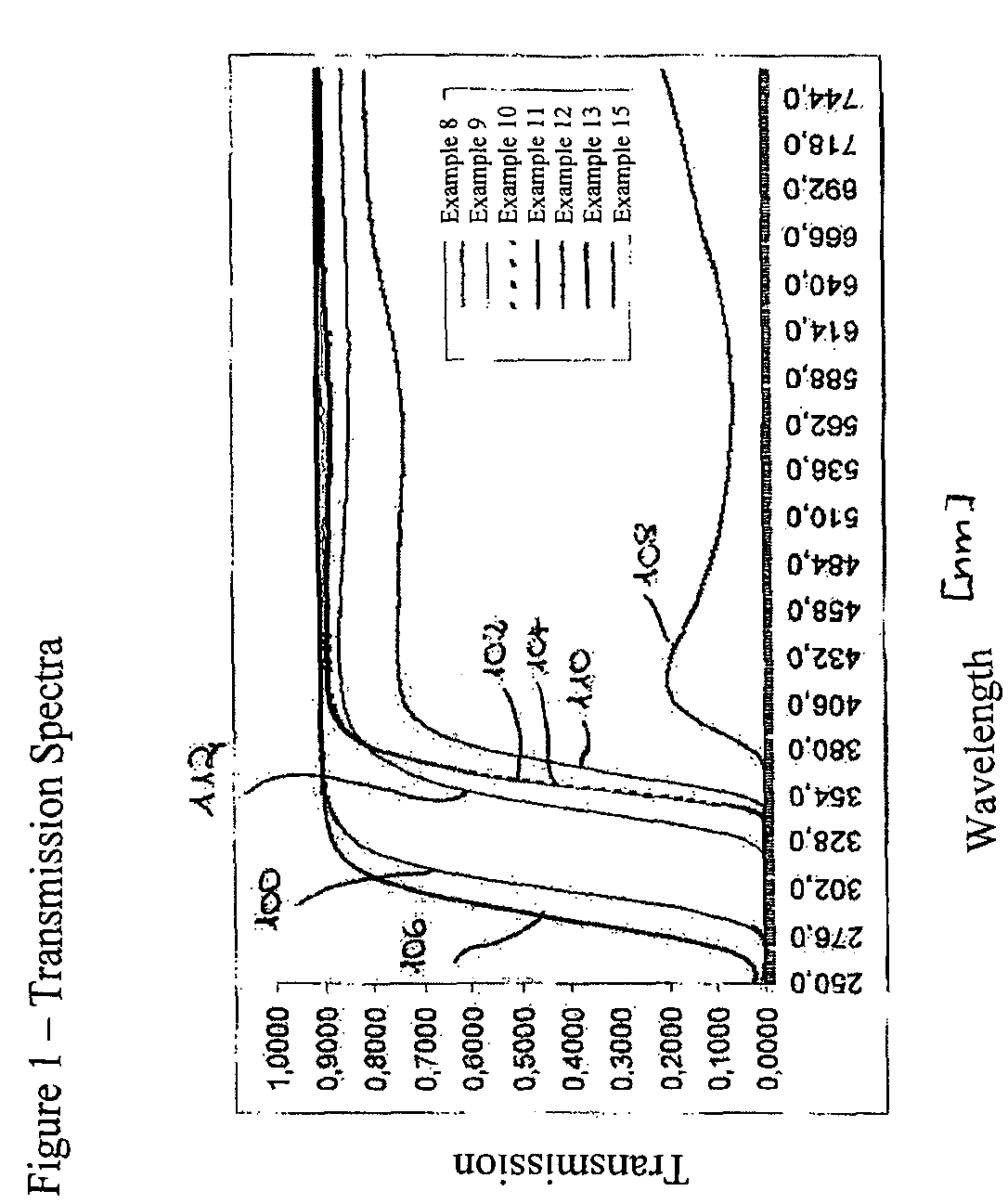Antimicrobial phosphate glass with adapted refractive index
a technology of phosphate glass and refractive index, which is applied in the field of antimicrobial phosphate glass with adapted refractive index, can solve the problems of low hydrolytic resistance, polymer degenerate, chain rupture, etc., and achieves high reactivity and high chemical resistance
- Summary
- Abstract
- Description
- Claims
- Application Information
AI Technical Summary
Benefits of technology
Problems solved by technology
Method used
Image
Examples
Embodiment Construction
[0116]The glasses described can also be produced via sol-gel processes in addition to the conventional melt process.
[0117]The glass was fused out of raw materials in a silica glass crucible and subsequently processed into ribbons. The ribbons were further processed by means of dry grinding to produce powders with a particle size of d50=4 μm. Platinum crucibles, quartz crucibles, or ZAC crucibles (ZAC: baddelyte-corundum-stone) can also serve as the melt crucibles. Involved in the case of ZAC is melt-cast zirconium aluminum oxide. Quartz crucibles are made, as a rule, out of sintered quartz glass powder or coarse quartz glass sand, the sintered quartz glass powder or coarse quartz glass sand being porous.
[0118]Presented in Table 1 are the compositions and properties of alkali-free glasses that can be ground to produce the glass powders of the invention. The compositions refer to the synthesis values in wt % based on oxide.
[0119]
TABLE 1Compositions (synthesis values) [wt %] of glass c...
PUM
| Property | Measurement | Unit |
|---|---|---|
| size | aaaaa | aaaaa |
| size | aaaaa | aaaaa |
| size | aaaaa | aaaaa |
Abstract
Description
Claims
Application Information
 Login to View More
Login to View More - R&D
- Intellectual Property
- Life Sciences
- Materials
- Tech Scout
- Unparalleled Data Quality
- Higher Quality Content
- 60% Fewer Hallucinations
Browse by: Latest US Patents, China's latest patents, Technical Efficacy Thesaurus, Application Domain, Technology Topic, Popular Technical Reports.
© 2025 PatSnap. All rights reserved.Legal|Privacy policy|Modern Slavery Act Transparency Statement|Sitemap|About US| Contact US: help@patsnap.com

